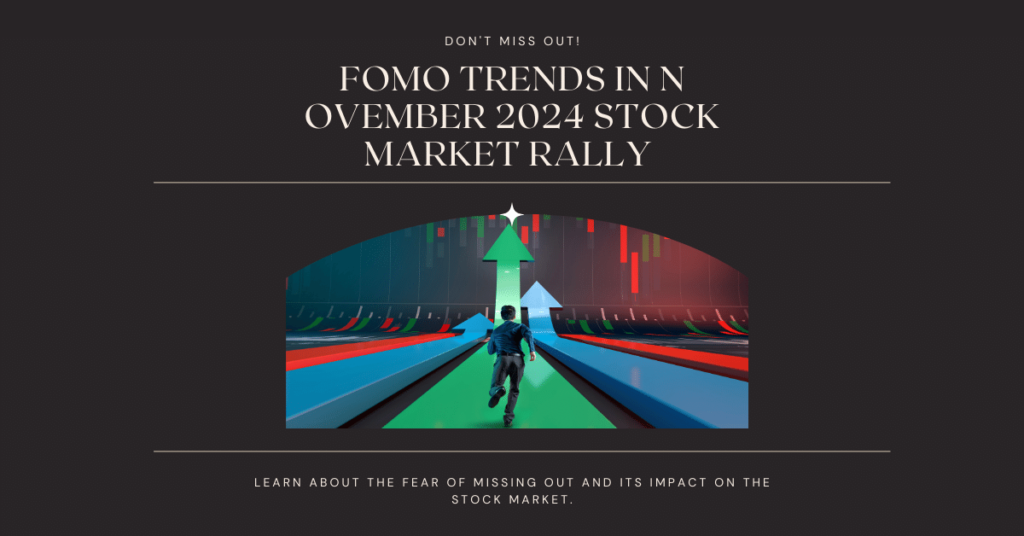In the fast-paced world of finance, where every move could be a game-changer, the recent market surge has left both seasoned investors and casual observers intrigued. As the echoes of the November rally continue to resonate, the Fear of Missing Out (FOMO) has become more than just an acronym; it’s a phenomenon shaping investment strategies for the year ahead.

The FOMO Surge: Unmasking the Players
The curtains rose on the November stage, revealing an unexpected cast of performers. The S&P regional bank index (KRE) took center stage, showcasing an impressive 16% rise, while Cathie Wood’s Ark Innovation ETF (ARKK) stole the spotlight with a staggering 34% gain. Meme stocks, typified by the Roundhill Meme ETF (MEME) and the ever-volatile GameStop, witnessed an exhilarating ascent, each securing over 20% in November.
Behind the Scenes: A Fear of Missing Out on Rate Cuts
The plot thickened as fears of higher-for-longer interest rates had initially spooked the market, especially casting a shadow on the tech sector. However, the narrative took an unexpected turn during the November rally. The small-cap Russell 2000 Index (^RUT), often overlooked due to concerns about high interest rates, defied expectations with a robust 9% surge.
Interactive Brokers chief strategist Steve Sosnick aptly described this market sentiment as a “Fear of Missing Out” rally, driven by the expectation of declining interest rates. Traders, in pursuit of quick profits, deemed cash as “trash” compared to the allure of risk assets.
Shuffling the Deck: A Tactical Approach
In the wake of the Federal Reserve’s hints at a possible rate hike, institutional investors found themselves at a crossroads. eToro US investment analyst Callie Cox revealed that institutional investors, caught off guard when the S&P 500 bottomed in late October, swiftly adjusted their strategies. The National Association of Active Investment Managers confirmed that investors were at their least exposed to equities in over a year.
As signs of cooling inflation emerged, a case built for the belief that the Fed might not only halt hikes but potentially cut rates. Investors, in a bid to chase performance, pivoted towards interest rate-sensitive sectors. Real Estate (XLRE) and Technology (XLK) emerged as stars, gaining more than 12% in November, while Financials (XLF) and Consumer Discretionary (XLY) rose more than 10%.
Anonymous Insights: An Unbiased Outlook
The Federal Reserve, cautious not to prematurely signal a shift in policy, attempted to manage expectations. Fed Chair Jerome Powell emphasized the need to avoid premature conclusions about a restrictive stance or speculation on when policy might ease. Invesco chief global market strategist Kristina Hooper, while acknowledging the Fed’s incentive to talk markets down, expressed the likelihood of a rate cut, noting the market’s excitement.
Analyzing the Playing Field: Are Markets Overheated?
With active managers’ index reaching its highest level since the AI-driven rally in the summer, investors face a critical question: have markets aggressively priced in rate cuts? In a cautious stance, the Federal Reserve refrains from confirming a sufficiently restrictive stance. Invesco’s Hooper suggests that while the market is excited, it is likely to witness some moderation, attributing it to the anticipated rate cut.
Bank of America’s Sell Side Indicator, tracking investor sentiment, paints a cautious picture. Despite the growing expectations for a soft landing, the indicator remains “more bearish than bullish,” according to Savita Subramanian, the bank’s head of US equity & quantitative strategy.
Navigating the Future: FOMO Amid Uncertainties
As the dust settles on the November rally, analysts like Callie Cox maintain a vigilant outlook. Cox points to Bitcoin’s recent surge but notes the absence of aggressive moves into alternative cryptocurrencies, signaling a more measured approach among investors. The speculative trading landscape, she argues, has evolved, with investors carefully navigating the treacherous environment characterized by high rates and lingering uncertainties.
Conclusion: Decoding the FOMO Phenomenon
In the grand theater of finance, the November rally has left a lasting imprint, showcasing the ever-present FOMO Fear of Missing Out. As we navigate the uncertainties of 2024, investors must tread carefully, balancing the excitement of the market with a prudent assessment of potential headwinds. The FOMO trade picks that surged in November serve as both a lesson and a harbinger, reminding us that in the intricate dance of the market, staying ahead requires a keen sense of timing and a strategic mindset.
